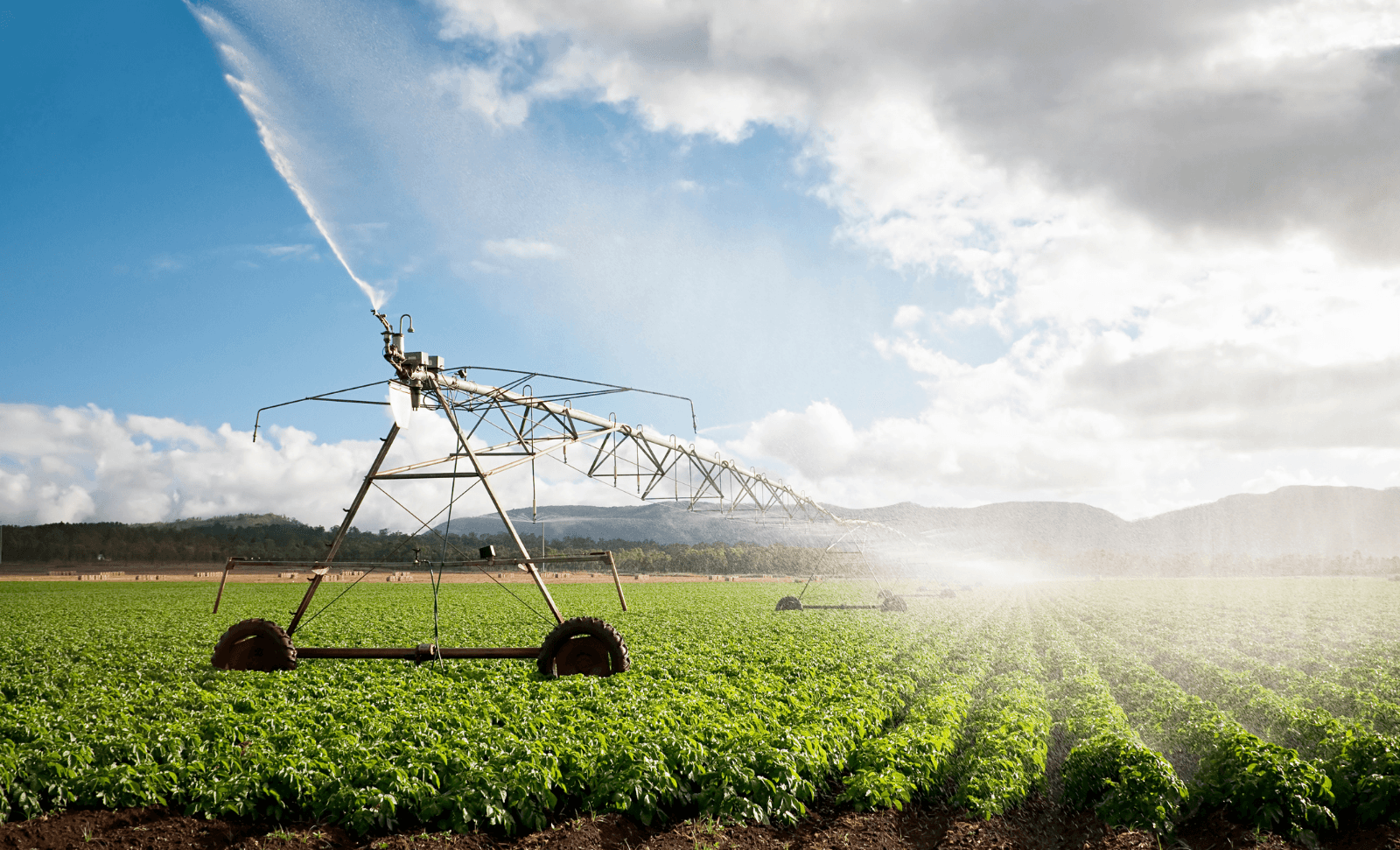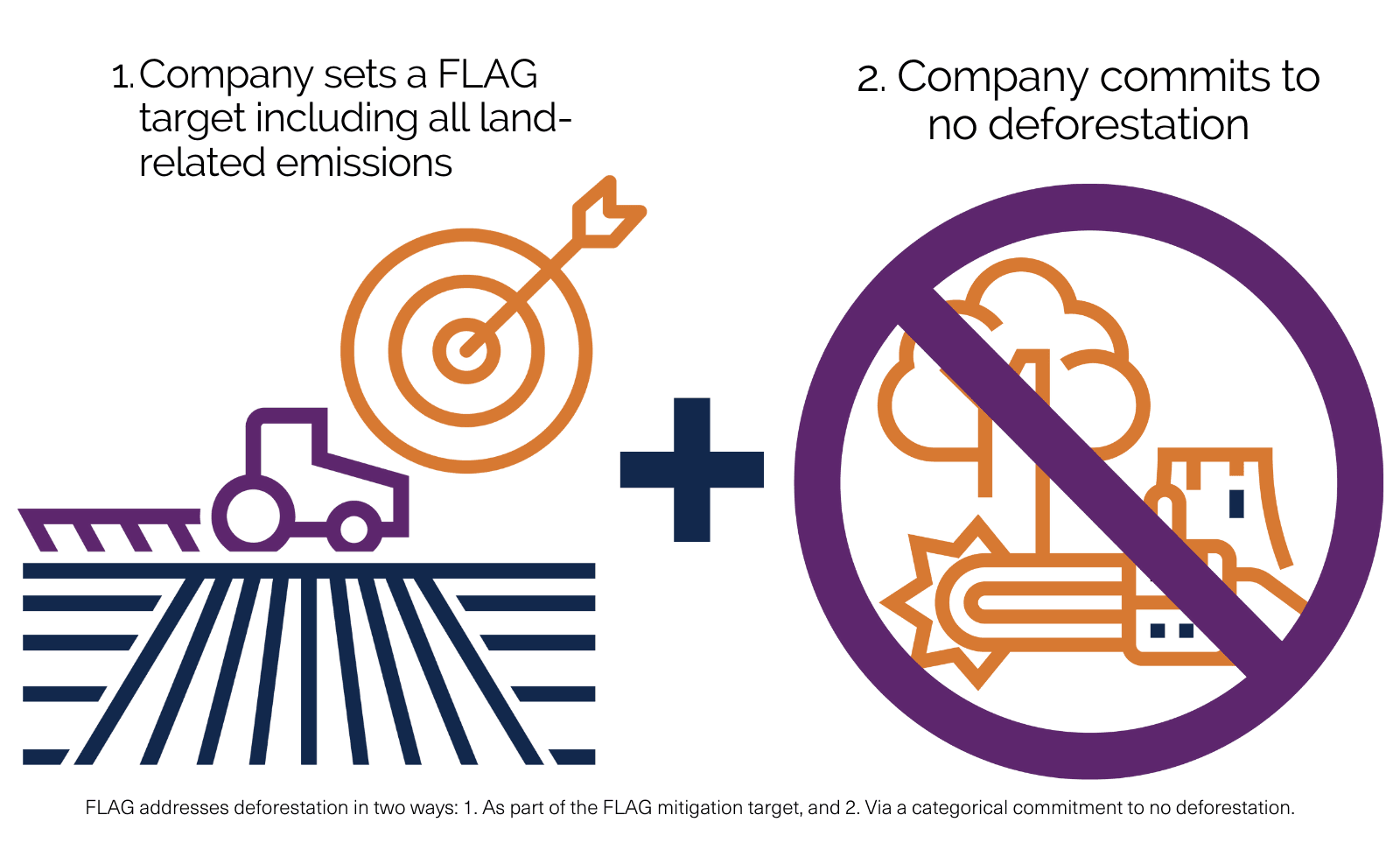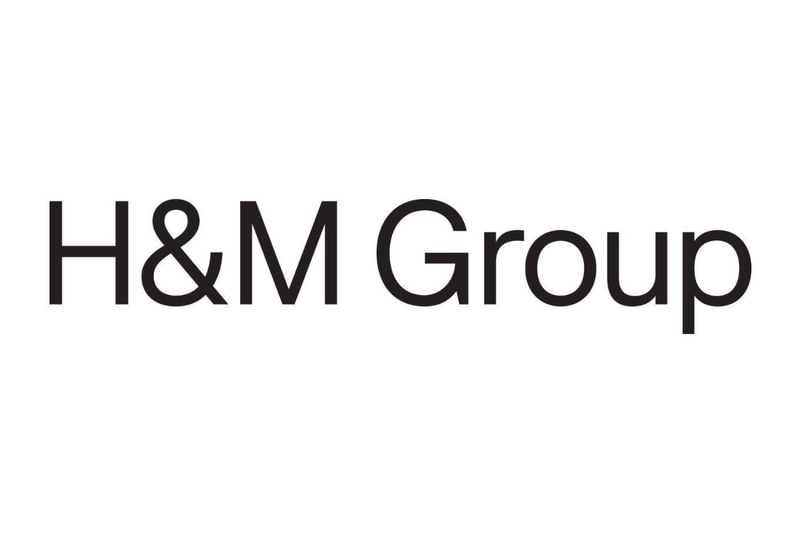
Forest Land and Agriculture pathways will require action on deforestation
Jun 2nd 2022
Land use changes, including deforestation, are a major source of global greenhouse gas emissions. In the first of a series of blogs exploring questions raised during public consultation on the SBTi’s forthcoming target-setting guidance for forest, land and agriculture (FLAG) companies, Martha Stevenson, Christa Anderson, Tereza Bicalho and Leah Samberg explain how the guidance will account for land-use change emissions.
Many companies in the food and forest products sectors have deforestation-related greenhouse gas (GHG) emissions in their supply chains. Think of the grocery retailer that sells beef from cows that were fed soy, some of which was grown on land that was recently deforested. These emissions make a significant contribution to forest, land and agriculture (FLAG) emissions.
In fact, about half of land-related emissions and 10% of net global GHG emissions (according to the IPCC) are from land use change, including deforestation and conversion of other natural habitats. But despite this huge impact on climate change, land use change emissions have been largely absent from corporate climate inventories - until now.
The SBTi recognizes the importance of cutting these emissions, which is why our FLAG sector pathway and criteria therefore explicitly includes land use change emissions and a deforestation policy requirement.
Defining land use change
We used the pathway developed in “Contribution of the land sector to a 1.5°C world”, by Roe et al 2019 as the basis of our FLAG sector pathway. This paper says the climate mitigation potential of all land use change is 4.6 GT annually to 2050. Land use change includes all of the following: emissions from deforestation and forest degradation, conversion of coastal wetlands, conversion of savannas and grasslands and peatland burning.
Stopping deforestation makes up the majority - 80% - of the 4.6 GT mitigation potential from land use change. As a result, land use change is often referred to as ‘deforestation’ in shorthand. This has created some confusion about whether other types of land conversion are included in SBTi-FLAG targets. The answer is yes: as mentioned above, all types of land use change are included. Halting deforestation is the biggest climate opportunity, but protection of all natural ecosystems is essential to achieve a net-zero, nature positive future, where nature is restored and thriving ecosystems play a critical role in tackling climate change.
Reducing emissions from deforestation, a top priority
In addition to including all land use change emissions in a target setting framework, the SBTi’s new FLAG guidance and tool will require companies to make a no-deforestation commitment. These commitments are common among companies that produce and source agricultural and forest products, though most are still working to deliver on them. This requirement highlights the urgency of eliminating agriculture- and forestry-driven deforestation as a critical first step in the mitigation hierarchy. Its goal is to ensure companies keep focusing on these essential actions and don’t slow or delay efforts to achieve deforestation-free operations and supply chains. Including commitments to no-deforestation alongside climate targets in the FLAG guidance will ensure companies have well-aligned forest and climate commitments as they begin to add FLAG-specific science-based targets to their climate strategies.

Updates from public consultation
In January and February 2022, we held a public consultation to inform the development of the SBTi’s FLAG guidance. We received more than 1,600 comments from 160 respondents. We specifically asked for feedback on the no-deforestation commitment, and received more than 100 comments on this topic. Comments were broadly supportive of including this commitment, but asked for clarity on dates and boundaries. In response, we revised the guidance to align the deforestation commitment with the Accountability Framework initiative (AFi), a diverse global coalition of environmental and human rights organizations:
“[Company X] commits to no-deforestation across its primary deforestation-linked commodities, with a target date of [year, no later than 2025].”
Approved FLAG targets published on the SBTi website will include a no-deforestation target alongside the science-based target. The SBTi highly recommends that companies align no-deforestation commitments with AFi guidance. The AFi provides consensus-based definitions and guidance for companies implementing ethical supply chains for agricultural and forestry products.
The FLAG guidance also recommends companies set a no-conversion target. As noted, all forms of land use change are included in the FLAG sector pathway model and would be reflected in corporate GHG inventories. Many companies are operating in or sourcing from geographies where non-forest habitats are being lost to agricultural commodity production, and these emissions must also be included and addressed.
It is essential that companies receive clear guidance on best practice for setting both no-deforestation commitments and FLAG targets. Therefore, the SBTi and AFi have collaborated to ensure the FLAG guidance builds on and is consistent with existing expectations for no-deforestation and no-conversion. In this way, climate and forest commitments are aligned and co-supported. Further guidance from AFi, WWF and WRI on the intersection of climate and deforestation will be published this year.
The SBTi’s FLAG guidance will be launched in Q3 2022.
Martha Stevenson is Strategic Advisor for the SBTi and Senior Director of Forests, Strategy and Research at WWF. Christa Anderson is WWF’s Senior Program Officer for the SBTi’s FLAG sector development. Tereza Bicalho is Climate and Land Technical Manager for the SBTi. Leah Samberg is Lead Scientist at Rainforest Alliance and member of the AFi Backbone Team.
Note that the FLAG pathways are currently in technical review, which could result in additional changes.



